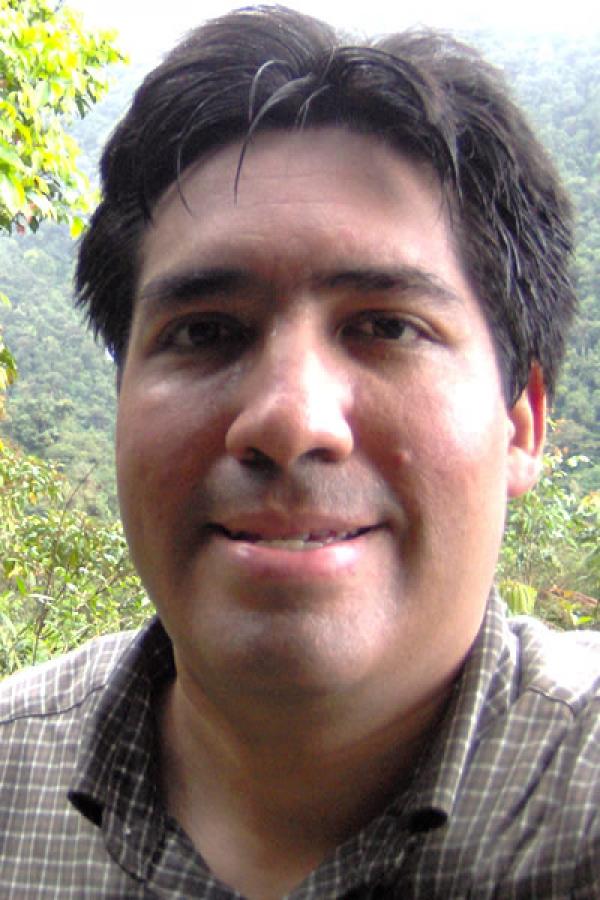Pedro Ponce

Photo by Pedro Ponce
Bio
Pedro Ponce is the author of Superstitions of Apartment Life (Burnside Review Press, 2008), a hybrid of fiction and nonfiction folklore; the story collection Alien Autopsy (Willows Wept/Cow Heavy Books, 2010); and the novella Homeland: A Panorama in 50 States (Seven Kitchens Press, 2011). His fiction has appeared in numerous publications, including Copper Nickel, Arroyo Literary Review, Web Conjunctions, Alaska Quarterly Review, and Ploughshares. His stories have also appeared in anthologies such as Flying House, Art from Art, Re:Telling, Sudden Fiction Latino, DIAGRAM: The Second Print Anthology, You Have Time for This, and The Beacon Best of 2001. Born and raised in San Diego, he currently lives in Canton, New York, where he teaches fiction writing and literary studies at St. Lawrence University.
Author's Statement
For the last couple of years, I've been a short story writer attempting to make the transition to writing novels. It's easy to underestimate the differences between genres; it's not just about adding pages, as I soon learned after starting work on my first full-length novel in the summer of 2010. The more time I spent away from the novel, the hazier the plot and characters, and the less narrative energy to galvanize readers' interests chapter by chapter. The support of the NEA will allow me invaluable time, not only to practice but also learn the craft of novel writing from teachers up to now shelved away for future reference.
Excerpt from "The Piazza de Chirico"
Moon
In spring, the Piazza extends its hours, opening to visitors after dark. Beneath the gloss of a full moon, sculpted fruit sprouts from the cobblestones with particular succulence. Even the passageways through desolate colonnades are not without their charm, threaded by silver moths and blossoming vines. Between a screening at the local art house and a late meal taken al fresco, couples often stroll the Piazza's length, noting mutual reactions with dissembled interest. If nothing more, the moonlit vistas are fodder for conversation. The fortuitously paired will recognize a shared amusement at the strangeness of the Piazza, indulging its wonders with the mild gasps and knowing laughter reserved for haunted houses or wax museums. A tree branch creaks overhead; footsteps echo from distant corners. We welcome the sudden clutch these provoke in our companions, the closeness afforded in traversing the unknown. We regain the well-lit avenues arm in arm. Yet occasionally, the Piazza lingers beyond its role in our designs. We make small talk, consider menus, weave fingers emboldened by wine. Across the table, we sense an absence behind nods of understanding, a distraction focused just beyond.
Map
Despite repeated attempts by the Bureau of Public Works, no accurate map exists of the Piazza de Chirico. Every updated version is followed by weeks of indignant calls from parents led to dead ends on their way to birthday parties; breathless octogenarians lost to walking groups; weeping dog walkers who looked away for mere seconds; aspiring fiancés foiled at the crucial moment by the apparent disappearance of the Palm Grove. Indeed, the Piazza is not one square, but many. Its spaces proliferate with every visitor. From the height of the Great Tower, we could be looking at our kitchen tables, fruit ripening on a nearby sill, juice cooled in a fluted pitcher. From the ground, the pitcher acquires limbs and a torso, speckled rind the enormity of monumental sculpture. The overhanging loggia resembles a giant's backrest. Later, we will ignore amused whispers and irritated stares to finger transit tokens and cigarette lighters, toll slips and canned sardines, ruins newly excavated.
Shadow
There are days we resent the Piazza. Its stark vacancies strike us as bland, its poetic appositions precious and crude. We forsake its shadowy cloisters for the aisles of the All-Mart. We relish the store's tidy geometry, shelves piled with all manner of tangible distractions: bowling balls, fishing rods, tires, plastic lawn fixtures, oven cleaner, stock pots, dish cubbies, door stops, espadrilles, hiking cleats, aromatic candles, concealers, revealers, duvets, bathing salts, cosmetic masks, analgesics. We fill baskets, carts, and canvas bags. We sign for the total, names etched in duplicate. Traffic swells at our return; we signal by horn and gesture the urgency that impels us. Amid construction cones and terraces of blinking letters, the Piazza's turnstiles sway feebly in the rusting light.
Clock
Visitors are surrounded by clocks, mounted on pediments overhead and reputedly accurate. There is thus no excuse for malingering. Nevertheless, we find ourselves giving the same excuse to skeptical faces: We lost track of time. How to explain the experience of the Piazza, where time is marked not by what is happening but what is about to happen? The houselights dim. A curtain rises. We wait, silenced before the bare stage.
( "The Plaza de Chiraco" was originally published in Art from Art.)

